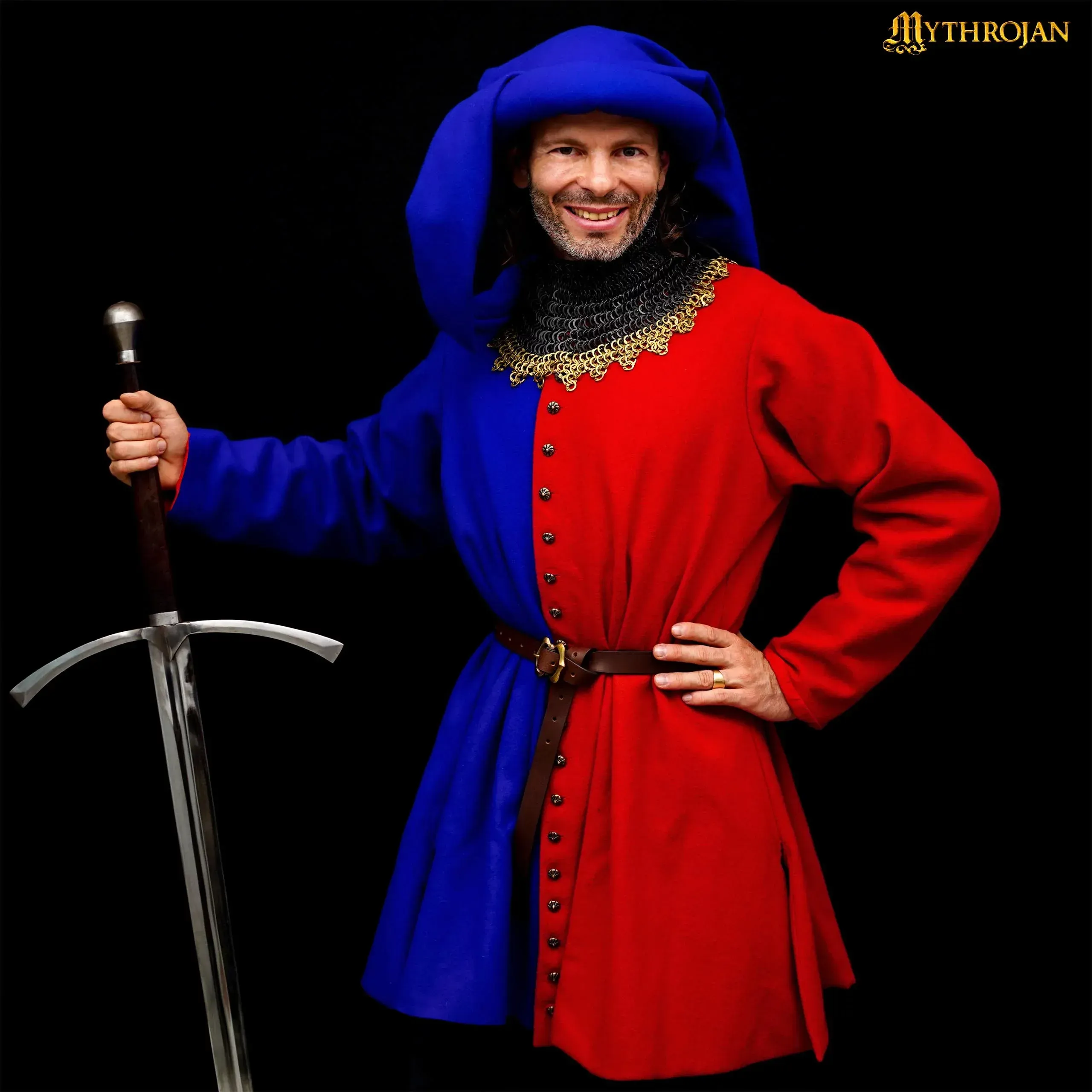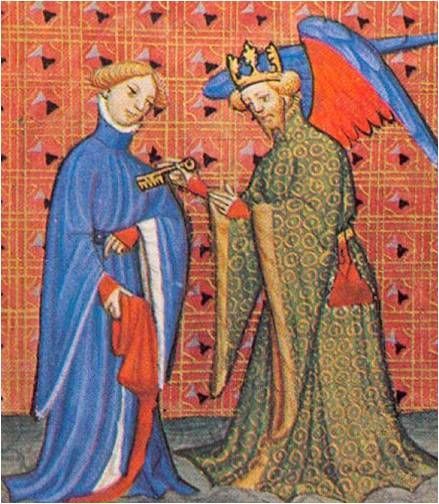What is a Hopalanda or Houppelande?
The Hopalande, also known as Houppelande or simply "hopa," is an iconic historical garment of medieval European fashion. This piece of clothing not only defines the refined and ostentatious aesthetic of its time but also reflects the social distinction and taste for luxury characteristic of the 14th and 15th centuries. Let’s explore more about the design, use, and legacy of this fascinating garment.
Design and Features
The Hopalande is a long outer garment, known for its wide sleeves and funnel-shaped collar. This particular design makes it stand out among medieval clothing, especially among the affluent classes. The sleeves could be so long that they sometimes touched the ground, adding a touch of volume and elegance.

Use and Social Context
The Houppelande was worn by men, women, and children at important social events such as ceremonies, dances, and strolls. This garment was made from elaborate fabrics like silk, brocade, and velvet, reflecting the social status of the wearer. Its use was often limited to special occasions due to its luxurious and elaborate design.
Variations and Embellishments
Throughout the 14th and 15th centuries, the Hopalande underwent modifications in its structure while maintaining its main characteristics. The design of the collar could vary, sometimes being low or raised, and it often featured front openings for ease of movement. The embellishments included details on the sleeves and the edge of the skirt, often elaborated with fur.

Decorations and Lining
In addition to the fur trimmings and decorations, the inside of the Hopalande was lined with fur for warmth during the winter months. An ornate and rich jewel like the belt complemented the garment, often set with precious stones, adding a touch of luxury.
Variants of Use
The length of the Hopalande varied according to its purpose. For ceremonial events, it commonly reached the ground. However, for activities such as hunting or dancing, it was shorter, sometimes reaching the thighs. This shorter version, called Haincelín, was exclusively for men.
Influence and Legacy
Although shorter and more fitted garments became popular over time, the Hopalande retained a prominent place in fashion due to its representation of distinction. This taste for long and elaborate clothing influenced dress until the 16th century, especially in the attire of monarchs and professions that required a dignified appearance.
| Type of Garment | Use | Fabric | Details |
|---|---|---|---|
| Long Hopalande | Ceremonies and Events | Silk, Brocade | Long sleeves, Funnel collar |
| Haincelín (Short) | Hunting, Dancing | Velvet | Decorated belt |
The Hopalande is undoubtedly a garment that has left a lasting mark in the history of medieval fashion. Its peculiar design, the richness of its materials and ornaments speak of a time when clothing was synonymous with status and class.
















